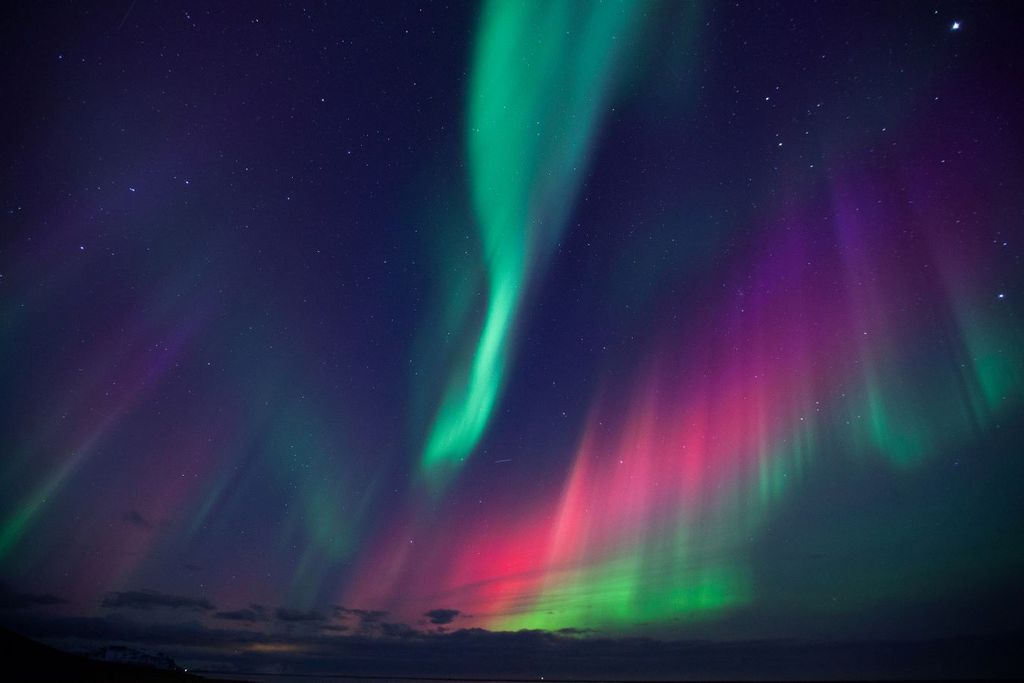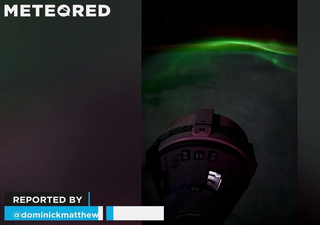The intense geomagnetic storm of the last few hours has brought auroras up to unusual latitudes
During yesterday's day the alert level in our planet increased due to the reinforcement of the geomagnetic storm that reached level G4, causing problems with technological devices and also incredible auroras.

A few days ago we talked about the G3 level solar storm predicted by NOAA (National Oceanic and Atmospheric Administration) for Monday, September 16, 2024.
A G3-level storm indicates a strong storm that can cause some problems and inconvenience to power lines, communications, and even navigation systems.
A severe geomagnetic storm hit the Earth
The next day, Tuesday, September 17, the storm increased in intensity reaching the G4 level, which indicates a severe geomagnetic storm.
Obviously, with the increase in the intensity of the storm, the disturbances associated with it also increase. Also the NOAA, together of course with NASA (National Aeronautics and Space Administration), regularly issues very detailed warning bulletins with the various risks expected with relative timing.
These disorders occur because solar particles, mostly electrons and protons, once they reach our planet, interact with our Earth's magnetic field.
The magnetic field is nothing more than a region of space around the Earth that extends for tens of thousands of kilometers that protects us from cosmic rays and all the charged particles that arrive from outer space. It is therefore a sort of electromagnetic shield that, however, in the case of particularly intense flows of charged particles, as in the case of strong solar storms, can miss some particles that arrive on our planet.

It is important to emphasize that it is also thanks to this protection that life on Earth is possible. Without it we will be constantly bombarded with particles that would eliminate any form of life.
A G4 level storm, like the one expected for yesterday, is obviously capable of causing significant inconvenience to the power grids as it is capable of triggering ground currents that can overload the electricity network, especially in the countries closest to the poles. It can also cause problems in communications, with frequent and long radio blackouts, and GPS.
Apart from all these inconveniences, however, there is also a very fascinating phenomenon related to solar storms: the magnificent auroras.
In fact, the polar auroras are formed when the charged particles of solar origin interact with the Earth's ionosphere by exciting the atoms of our atmosphere that then emit light at various wavelengths when de-energizing.
Wonderful auroras were also sighted in Alberta
This phenomenon usually occurs at the poles or in any case at high latitudes but, in the event of particularly intense storms, the latitude at which it is possible to admire them can also drop considerably and it is therefore possible to admire this spectacle even at medium-low latitudes.
Especially in the case of the geomagnetic storm that has just passed, it was possible to observe these amazing plays of light and shapes both in the southernmost regions of Canada, such as Alberta, and in the northernmost states of the United States of America.
However, solar storms have a rather short duration, they tend to last from 24 to 72 hours, and what has interested us in recent days has now passed. However, since we have now reached the peak of the 25th solar cycle, it is not excluded that another storm may reach us in the coming weeks.








